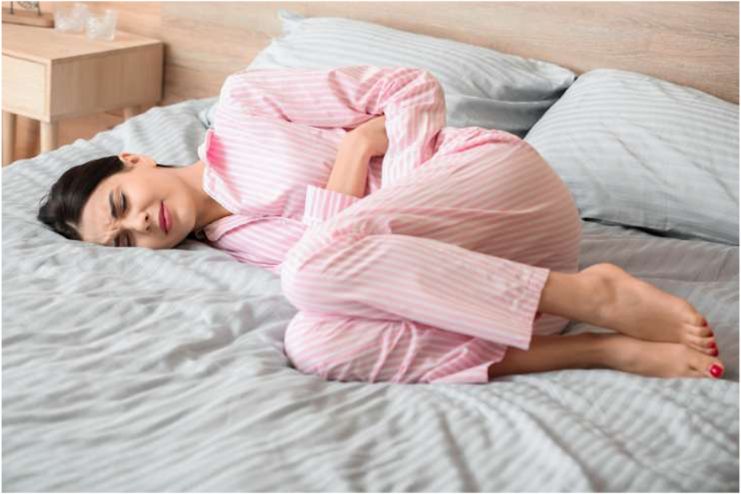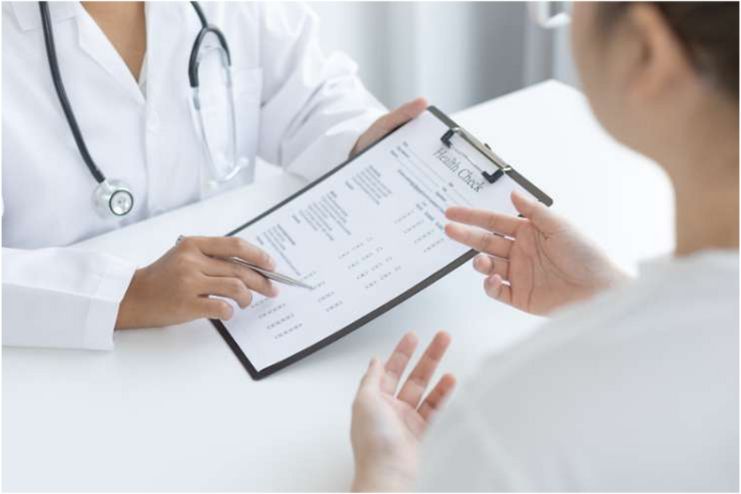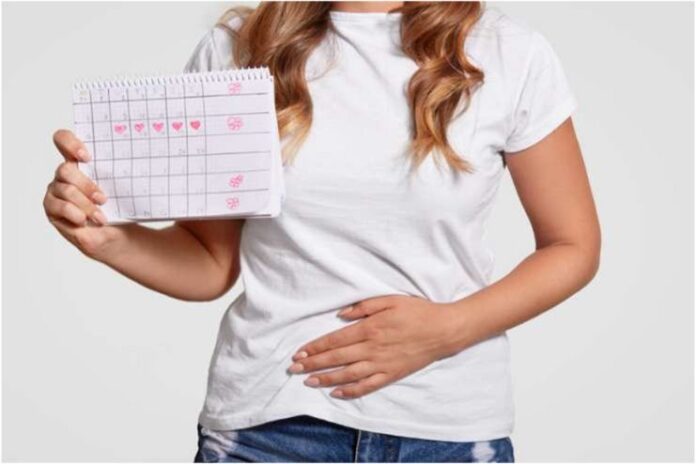Affiliate Disclaimer
Some links in this article are affiliate links. We may earn a small commission if you make a purchase through these links, at no extra cost to you. We only recommend products we find useful to our readersAlthough people often ignore menstrual health due to shame, discomfort, and misunderstanding, it remains a crucial component of overall well-being. From crippling cramps and bloating to mood swings and exhaustion, millions of people face physical and emotional difficulties each month. These discomforts are more than just problems; they can interfere with day-to-day activities, reduce output, and interfere with mental health.
Painkillers and other traditional treatments provide short-term relief, but they frequently don’t address the underlying causes of problems. It is when holistic methods become revolutionary.
Adopting a well-balanced approach to self-care, mindfulness, and nutrition can transform the menstrual experience from endurance to empowerment. Let’s explore how to make that adventure comprehensive, life-changing, and exclusively yours.
Read More: What Your Period Blood Color Says About Your Health
Understanding Menstrual Discomfort

The menstrual cycle, a unique biological regularity, reflects the body’s complex architecture. Women of reproductive age frequently experience menstrual discomfort, which is often linked to emotional, physical, and behavioral health issues.
Muscular uterine contractions brought on by prostaglandins—chemicals implicated in inflammation and pain—are the cause of primary dysmenorrhea (pain associated with menstruation). In general, menstrual discomfort increases with prostaglandin levels.
For one to two days every month, about half of women who menstruate have some level of pain. The pain is usually not too severe. However, for other women, the pain is so bad that it prevents them from going about their daily lives for a few days each month.
Prostaglandins cause the uterine muscles and blood vessels to contract. Prostaglandin levels are high on the first day of a period. They decrease when the uterine lining sheds and the bleeding continues. For this reason, pain usually subsides after the first few days of a period.
Menstrual pain affects over 80% of persons who have periods at some point in their lives.
Between 5% and 10% of menstrual individuals suffer from excruciating period pain that interferes with their daily activities.
Shortly after a girl begins having periods, she develops primary dysmenorrhea. As they age, many women with primary dysmenorrhea experience less discomfort during their periods. Additionally, this kind of menstrual pain could get better after a delivery.
Holistic Approaches to Alleviate Discomfort

1. Dietary Adjustments
The saying “you are what you eat” accurately controls menstrual discomfort. Nutrition is a potent instrument for calming the body and balancing hormones; it is not just an energy source. Consuming foods that reduce inflammation can control menstrual cramps.
Ideally, every meal should include a balanced combination of complex carbs, healthy fats, proteins, and micronutrients.
According to a study in Obstetrics & Gynecology, following a low-fat, vegan diet considerably decreased many women’s pain and PMS. The study included thirty-three women on a conventional or low-fat vegan diet before switching therapies—the diet modification aimed to accomplish two goals.
It started by eliminating almost all vegetable oils and animal fats. Second, the diet’s fiber content rose due to its concentration on plant-based meals. Even though these women were on a low-fat vegan diet, their pain levels were noticeably less severe than when they were on a typical diet.
- Consume calcium-rich foods like dark green leafy vegetables like spinach and kale, beans, and almonds.
- Consume foods rich in antioxidants, such as bell peppers and squash and fruits like tomatoes, blueberries, and cherries.
- Steer clear of processed meals like sugar, pasta, and white bread.
- For protein, increase your intake of lean meats, cold-water fish, soy tofu (if you don’t have an allergy), or beans.
- Make use of nutritious cooking oils like vegetables or olive oil.
- Some women might alleviate menstruation pain by including soy milk in their diet.
- Get rid of trans-fatty acids, which are present in processed foods, margarine, cookies, crackers, cakes, French fries, onion rings, and donuts.
- Every day, consume six to eight glasses of filtered water.
Read More: 15 Tips for Managing Menstrual Symptoms at Work
2. Herbal Remedies and Supplements
Period pain is never enjoyable. It may annoy some, but it can be highly disruptive and fatal to others. When it comes to menstrual discomfort, the delicate touch of herbs can offer relief in ways that genuinely resonate with the body’s natural rhythms. Nature has long been a source of healing.
Using Heat: Applying heat to your lower back and abdomen can help ease pain. According to a 2018 assessment of research, heat therapy—typically a heat pack or patch—was just as successful at relieving menstruation pain as NSAIDs. It might also result in fewer adverse consequences. If you don’t have a heating pad or a hot water bottle, use a heated towel or have a warm bath.
Using Essential Oils for Massage: Menstruation massage therapy entails pushing on particular places as the therapist’s hands cross your back, side, and belly. There might be other advantages to using essential oils in an aromatherapy massage. According to a 2018 review of research, aromatherapy and massage therapy help lessen menstruation pain.
Including Herbs in Your Diet: These herbal medicines might lessen the swelling and muscular contractions linked to menstrual discomfort because they contain anti-inflammatory and antispasmodic ingredients.
- Chamomile: For menstruation, pain associated with mood swings, such as agitation and rage, as well as pain that follows angry outbursts.
- Lachesis: For pressure and discomfort that radiates to the back. At night, symptoms usually get worse.
- Ginger Tea: Its anti-inflammatory qualities can lessen nausea and cramps.
3. Lifestyle Modifications
Making the most minor adjustments to your daily schedule can occasionally result in the most remarkable changes in your menstrual health. Lifestyle changes based on exercise, balance, and mindfulness help reduce menstruation discomfort by improving your body’s resistance and general well-being. These adjustments are about taking back control of how you experience your cycle, not just about controlling symptoms.
Frequent Physical Activity: Exercise is one of the best ways to lessen menstruation pain. Yoga, walking, and mild aerobic exercise can release endorphins, the body’s natural painkillers. Over time, regular exercise also aids in symptom reduction and menstrual cycle regulation.
Stress Management: Since stress can worsen menstrual symptoms, mindfulness, deep breathing exercises, and meditation are helpful relaxation methods. Stress management techniques like yoga and tai chi can also be beneficial.
Getting Enough Sleep: It is essential for the body’s recuperation and hormone regulation during menstruation. You can enhance sleep quality by keeping a regular sleep schedule and creating a comfortable resting environment.
Read More: What Does Your Menstrual Cycle Say About Your Health? 12 Interesting Facts!
4. Alternative Therapies
Alternative therapies provide a distinct approach to reducing menstrual discomfort. They bolster the body’s healing processes by fusing traditional knowledge with contemporary insights. Chiropractic, acupressure, and acupuncture go beyond treating symptoms by encouraging balance and harmony.
Acupuncture: Acupuncture is now commonly used to treat menstrual pain. The National Institutes of Health suggests acupuncture alone or combined with other therapies. In a carefully planned trial of 43 women with menstrual discomfort, acupuncture-treated women experienced less pain and required less pain medication.
Acupressure: In traditional Chinese medicine, acupressure is a method used to encourage harmony and balance in the body. To promote the passage of energy, practitioners apply pressure to particular body spots called acupressure points. Acupressure seeks to return the body to its natural health without using needles, just like acupuncture does.
Chiropractic: Spinal manipulation, especially in regions that provide sensory and motor impulses to the uterus and lower back, may help some people with menstrual pain.
Medical Consultation and Treatment Options

Menstrual discomfort occasionally goes beyond self-care, indicating the need for professional assistance, even though holistic methods and lifestyle modifications can be quite effective.
Consult your physician if essential remedies for menstrual pain are ineffective or if your symptoms are so painful that they negatively affect your quality of life. Speaking with your healthcare professional will help you find individualized strategies to regain balance and well-being.
Making a note of your period information can help you and your doctor discuss it. When, how long, how heavy your period is, and how it affects your day-to-day activities are all things to note.
Medical professionals bring their experience and diagnostic instruments to find underlying disorders, such as fibroids, endometriosis, or hormone abnormalities, that could be causing the pain. They evaluate the symptoms and underlying causes to customize therapies to meet your needs.
Most importantly, don’t be afraid to ask for second perspectives or to voice concerns. Your health and comfort come first. Working with a reputable healthcare professional gives you the skills and information to manage your menstrual health properly, ensuring that discomfort never prevents you from reaching your full potential.
Read More: Top 8 Hormone-Balancing Foods: Supporting Women’s Hormonal Health Naturally
Conclusion
Even though it’s normal, menstrual pain shouldn’t stop you from enjoying life to the fullest. You may change how you feel about your cycle by adopting a comprehensive approach to menstrual health, from the restorative benefits of yoga, meditation, and complementary therapies like acupuncture to the nourishing potential of a healthy diet and herbal cures.
But it’s important to remember that every person’s experience is different. What is very effective for one individual might not be for another. Therefore, it’s crucial to combine these all-encompassing techniques with expert advice.
Explore these methods and prioritize your menstrual health to take control of your health. You can turn every cycle into a chance for balance and self-care with the correct resources and assistance.
References
- https://www.acog.org/womens-health/faqs/dysmenorrhea-painful-periods
- https://www.mayoclinic.org/diseases-conditions/menstrual-cramps/symptoms-causes/syc-20374938
- https://www.mountsinai.org/health-library/condition/menstrual-pain
- https://pmc.ncbi.nlm.nih.gov/articles/PMC2650252
- https://www.haleonhealthpartner.com/en-us/pain-relief/conditions/menstrual-pain/facts-stats
- https://www.womens-health-concern.org/wp-content/uploads/2022/12/20-WHC-FACTSHEET-Period-Pain-NOV2022-B.pdf
- https://www.pcrm.org/good-nutrition/nutrition-information/using-foods-against-menstrual-pain
- https://www.thewomens.org.au/health-information/periods/healthy-periods/exercise-diet-periods
- https://thewomenshealthcompany.com/a-holistic-approach-to-painful-periods
- https://healthcare.utah.edu/the-scope/health-library/all/2017/08/natural-remedies-period-pains
- https://pmc.ncbi.nlm.nih.gov/articles/PMC6214933
- https://pubmed.ncbi.nlm.nih.gov/11687013
- https://www.bupa.co.uk/newsroom/ourviews/natural-remedies-period-pain
- https://pmc.ncbi.nlm.nih.gov/articles/PMC6262530
- https://www.healthline.com/health/womens-health/menstrual-cramp-remedies#home-remedies
- https://pmc.ncbi.nlm.nih.gov/articles/PMC7982556
- https://privategynaecology.co.uk/exploring-alternative-therapies-for-menstrual-pain-relief-a-comprehensive-guide
- https://www.health.com/condition/menstruation/menstrual-pain-natural-remedies
- https://www.wholefamilyhealth.ca/programs/womens-health/painful-periods
- https://www.nhs.uk/conditions/period-pain
- https://www.betterhealth.vic.gov.au/health/conditionsandtreatments/menstruation-pain-dysmenorrhoea
In this Article




















